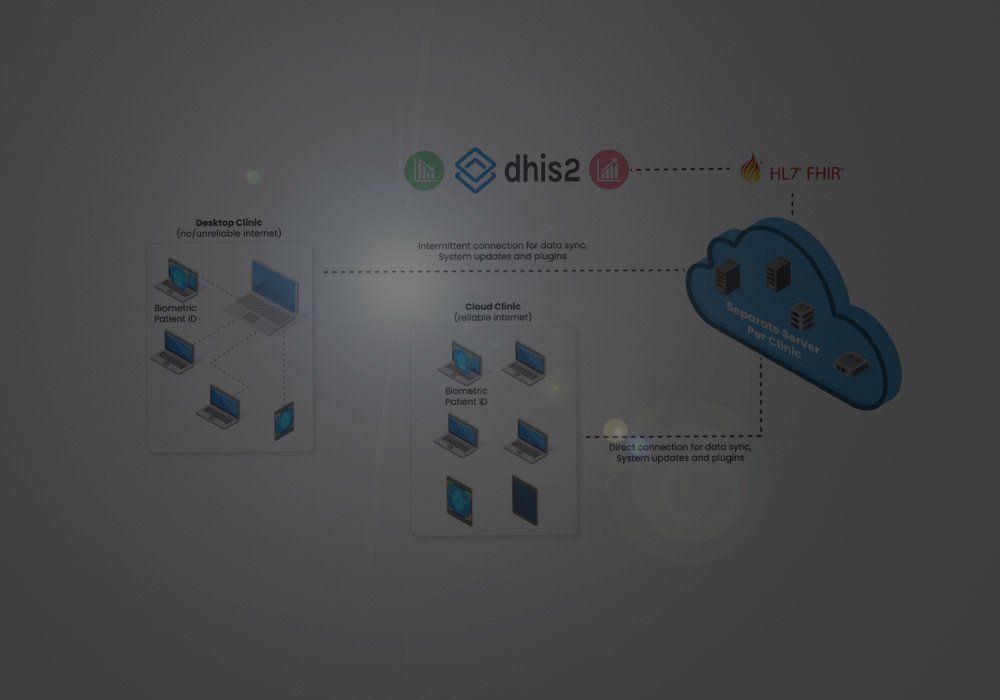Overview
The design of the System has been completely driven by the needs of end-users in some of the world’s most challenging clinical settings.
These needs have been identified, first-hand, and interpreted by a team of British General Practitioners who share over 100 years’ of Primary Care Experience.
Key design criteria from a technical perspective:
- Secure, robust, scalable
- Easy to use, out-of-the-box, but extensible courtesy of plugin/modular architecture
- Maintainability
- Speed of deployment for ALL clinics, both with and without internet
- Ease of deployment for clinics with no internet
- Interoperability: DHIS2
System Requirements - Desktop & Roaming Devices
Both Desktop & Roaming devices need to meet the following minimum OS & hardware requirements:
- Windows 10 Pro 64-bit (1909)
- BIOS: hardware virtualization enabled
- Hyper-V enabled
- i5, or equivalent
- 8GB RAM
Key Features:
- ‘Cloud Clinic’ for clinics with an internet connection
- ‘Desktop Clinic’ - installation for clinics with no, or intermittent internet connect. Multiple users can access the ‘Master’ Desktop installation via WiFi or wired network
- Roaming Deployment: download a copy of the System onto a laptop for outreach work: 'sync' with the Master database when you get back to a network connection (works for both Cloud & Desktop deployments
- Out-of-the-Box: the simplest possible EMR that can be learned quickly by novice computer-users
- Modular Design: plugin architecture means that functionality can be extended easily; plugins can be made available on clinic-by-clinic basis, regionally, nationally or to all users
- Secure: every clinic has its own secure server and automated backup





















